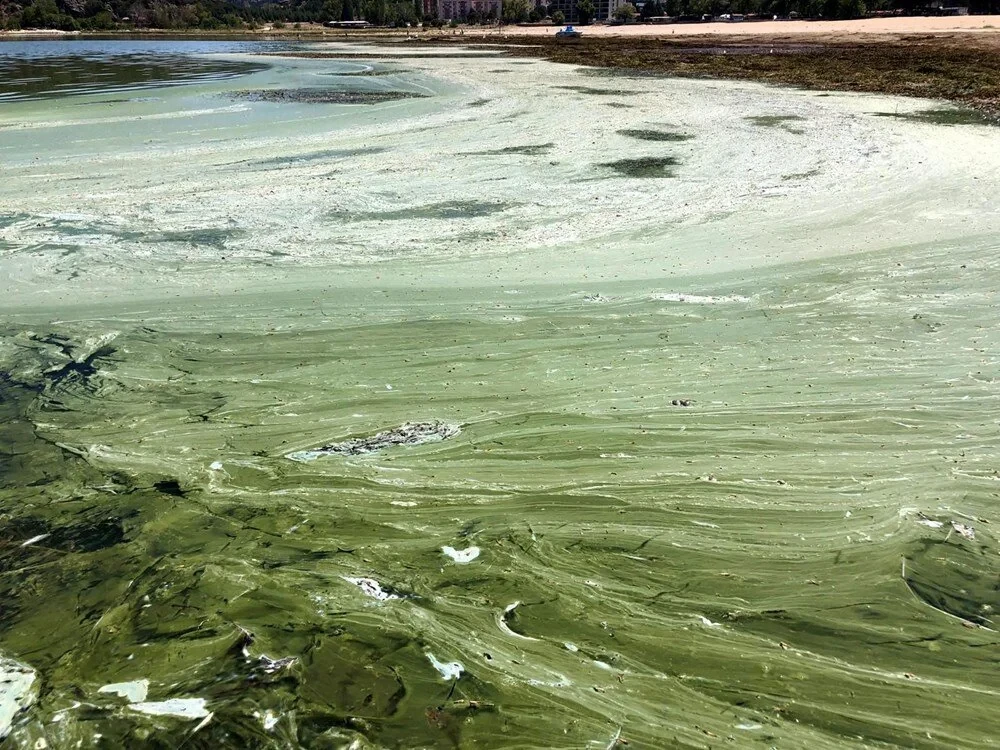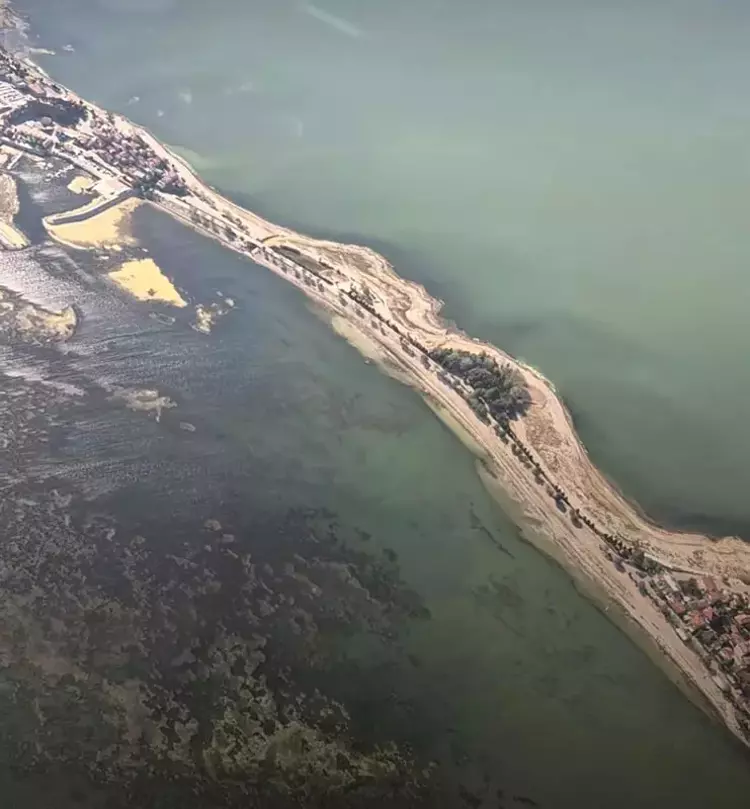Türkiye’s significant freshwater source Egirdir Lake faces severe pollution, drought
 Eğirdir lake in Isparta, Türkiye. (DHA Phtoto)
Eğirdir lake in Isparta, Türkiye. (DHA Phtoto)
Egirdir Lake, one of Türkiye’s largest and most important freshwater sources, is experiencing severe environmental distress this year.
Once boasting an average water depth of 16 meters in the 1950s, the lake’s depth has now plummeted to just 3.2 meters – with water loss reaching a staggering 70%.
The lake’s declining condition has given rise to alarming phenomena, including algal blooms and the emergence of mucilage.


Dramatic decline in water levels, quality
According to Dr. Erol Kesici, a scientific advisor to the Turkish Nature Protection Association (TTKD), certain sections of the lake’s water are now covered with a green layer of algal blooms, predominantly cyanobacteria.
The upper layers of the lake are now cloaked in mucilage, further signaling the lake’s critical condition. Dr. Kesici observed that the lake’s waters have turned a bright green-blue, indicative of widespread cyanobacterial activity.
“The overwhelming growth of algae is a clear indicator of the lake’s pollution,” Dr. Kesici noted.
The freshwater source is now overrun with plants. If immediate measures aren’t taken, restoring the lake to its previous water quality will become nearly impossible. The unchecked proliferation of both macro and micro aquatic plants, particularly the invasive cyanobacteria, marks the beginning of the end for the lake.
Dr. Erol Kesici
Pollution unveiled by lower water levels
The reduction in water levels has exposed the true extent of pollution in Eğirdir Lake, which has served as a dumping ground for waste for many years. Dr. Kesici highlighted that the lake’s pollution and resulting health issues are now manifesting through algal blooms, which have surfaced as the lake’s depths decrease.
“Some cyanobacteria species are toxic and their excessive growth has led to a decrease in dissolved oxygen levels in the water, rendering some parts of the lake lifeless. The lake water has degraded to the level of fourth-class water, the lowest quality,” he explained.
Water analyses from various parts of the lake reveal declining oxygen levels and increasing salinity, particularly in recent months.
Dr. Kesici warned that these changes negatively impact aquatic life and promote the rise of different species, further complicating the lake’s ecosystem.
In certain areas, the lakebed is covered in slimy, mucilage-like microscopic algae, highlighting the situation’s urgency.
Urgent need for protection and management
“Such developments lead to significant losses in water resources, especially in lakes with unbalanced water inputs and high pollution levels,” Dr. Kesici warned.
The intense pressure from agricultural pollution is causing a surge in nitrate and phosphate levels in the lake, turning the water various shades of yellow-green.
Dr. Erol Kesici
The stratification of water temperature and light levels has accelerated algal growth, and the presence of high suspended solid content in the lake indicates the lakebed is highly organic.
“Egirdir Lake is a living entity, preserved over millions of years through its natural surroundings and internal dynamics,” Dr. Kesici emphasized.
He compared the loss of biodiversity in the lake to organ failure, stating that the combination of reduced water levels and pollution has weakened the lake, eroding the ecosystem’s resilience.
“We must protect the lake along with its basin. Viewing and using Eğirdir Lake as a mere reservoir for the past 70 years, without adequate protection, has resulted in the dangerous algal blooms we’re witnessing now,” Dr. Kesici concluded.



